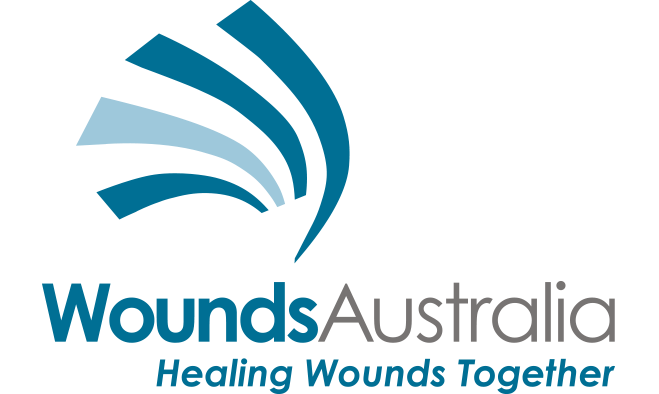Standards & Guidelines.
Access to the latest research evidence is just one benefit of being a Wounds Australia member. On this page, you will find a range of up-to-date publications on a variety of aspects of wound care.
- All electronic resources are free for members to download.
- Some electronic resources are offered free to everyone.
- Print copies of some publications are available (and heavily discounted for members).
Click each title to find out more.
Interested in reproducing content from our publications? Please read our extract guidelines below.
Wounds Australia supports educational and knowledge-sharing activities that promote wound care best practice in Australia and beyond. We welcome the use of our content for this purpose but ask that you observe our extract guidelines.
What is an extract?
Extracts include text, charts, tables, diagrams, photographs or any other material contained in Wounds Australia publications.
Extract guidelines
- Definitions from any glossary in a Wounds Australia publication may be used without permission.
- You must apply for permission to use content from Wounds Australia publications by completing this form.
- Permission is granted for a specific use; permission to use content in additional documents will require separate approval.
- Extracts must be accompanied by this acknowledgement: 'Reproduced with permission of Wounds Australia. All rights reserved.'
- We reserve the right to decline extract permission at our discretion.
- Extracts from draft documents (which will be clearly marked as draft material) are not permitted.
- Copyright: Extracts may be used within the provisions of Australian Copyright Law.
Aseptic Technique
A consensus document outlines key considerations for aseptic technique, including wound cleansing, environmental factors, and the management of wound care products.
Available in full or abridged versions.
Wound Standards
The fourth edition provides an evidence-based framework for best practice in wound prevention and management, guiding clinical practice, policies, and education.
It aims to embed best practice standards across care settings to reduce harm from chronic wounds.
Lower Leg Ulcer Diagnosis and Principles of Treatment
To address the lack of uniform diagnostic guidelines for lower leg ulcers, EWMA formed a working group to compile the best evidence on diagnosing infection, arterial and venous insufficiency, leg oedema, and atypical causes.
In collaboration with Wounds Australia, this document serves as a practical diagnostic tool, supported by a one-page guide available on the EWMA website.
Managing Wounds as a Team
Healing chronic wounds requires a multidisciplinary approach, which can be complex for both patients and healthcare professionals. This position document, developed with EWMA and AAWC-USA, presents a patient-centred model to guide team-based wound care.
eHealth in Wound Care
A rapid and structured overview for clinicians of eHealth (telehealth and telemedicine) applications in wound care, including terminology, methodology, benefits and barriers to implementation. This 2015 publication is a joint project of EWMA and Wounds Australia.
The International Guideline (2025)
The 4th edition of The International Guideline provides evidence-based recommendations for preventing and treating pressure injuries, implementation advice, and a quality audit guide with 20 indicators. The electronic version is free to download from 28 February 2025, with publisher approval required for extracts.
 Pressure Injury Quick Reference Guide
Pressure Injury Quick Reference Guide
The Quick Reference Guide (QRG) provides a concise summary of evidence-based recommendations, good practice statements, and quality indicators from the Clinical Practice Guideline.
It is not for standalone use and is available as a free electronic download or purchased hard copy, with publisher approval required for extracts.
 Wound Infection in Clinical Practice
Wound Infection in Clinical Practice
A practical, updated resource that is easy to use and understand, this international consensus document covers terminology, diagnosis, stages of wound progression, biofilm, wound bed management, antimicrobial therapy and much more.
 Atypical Wounds
Atypical Wounds
Atypical wounds comprise about 20% of all wounds and are expected to become more common as our population ages, so it's essential that healthcare professionals understand how to identify them and refer to an expert where necessary. This document covers diagnosis and treatment based on evidence from research.
 Use of Oxygen Therapies in Wound Healing
Use of Oxygen Therapies in Wound Healing
Oxygen is essential for vessel and tissue regeneration, infection resistance, and wound healing.
This guide, published by Wounds Australia and EWMA, provides an overview of oxygen therapy options, their impact on healing, and their use for different wound types.
 Palliative Wound Care
Palliative Wound Care
This document responds to the WHO's call for clinician resources in palliative care, reviewing wound-related symptoms and providing up-to-date practice recommendations.
It uses "palliative wound care" (PWC) as an umbrella term for three wound categories requiring a palliative approach.
 Venous Leg Ulcer Guideline
Venous Leg Ulcer Guideline
The Australian and New Zealand Clinical Practice Guideline for Prevention and Management of Venous Leg Ulcers consensus presents a comprehensive review of the assessment, diagnosis, management and prevention of VLUs within the Australian and New Zealand healthcare context, based on evidence available up to January 2011.
An updated Guideline is currently in production.
 Management of patients with venous leg ulcers
Management of patients with venous leg ulcers
This document highlights some of the barriers and facilitators related to implementation of VLU guidelines and provides clinical practice statements to overcome these and "fill the gaps" currently not covered by the majority of available guidelines.
 Surgical site infection
Surgical site infection
While guidelines for preventing and managing surgical site infections (SSI) in hospitals are in place in many countries there is still a need for guidance on how to deal with SSI management and prevention in community care.







